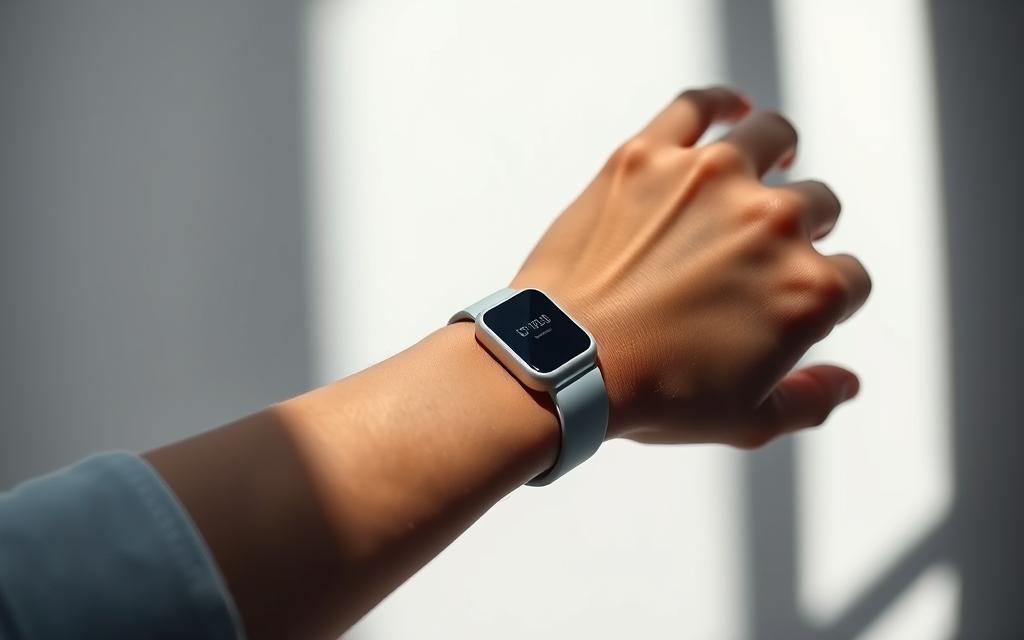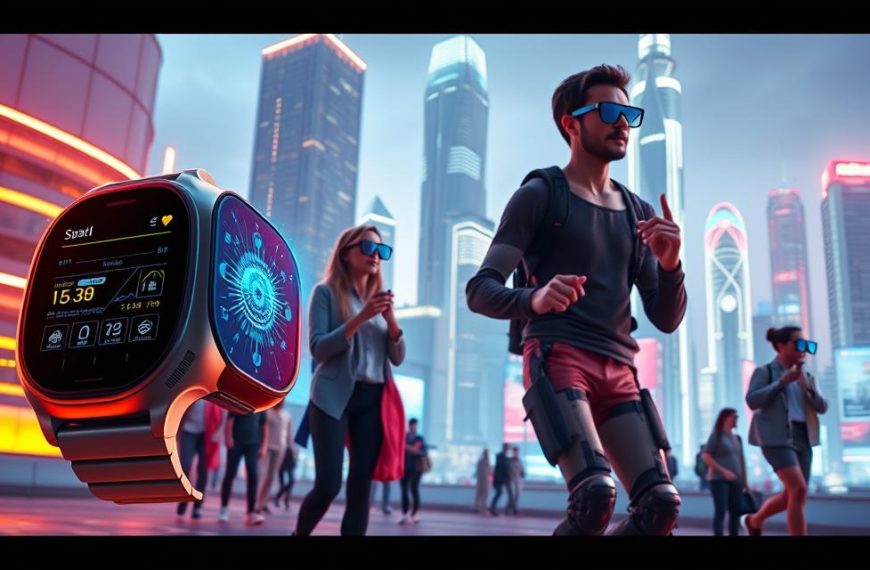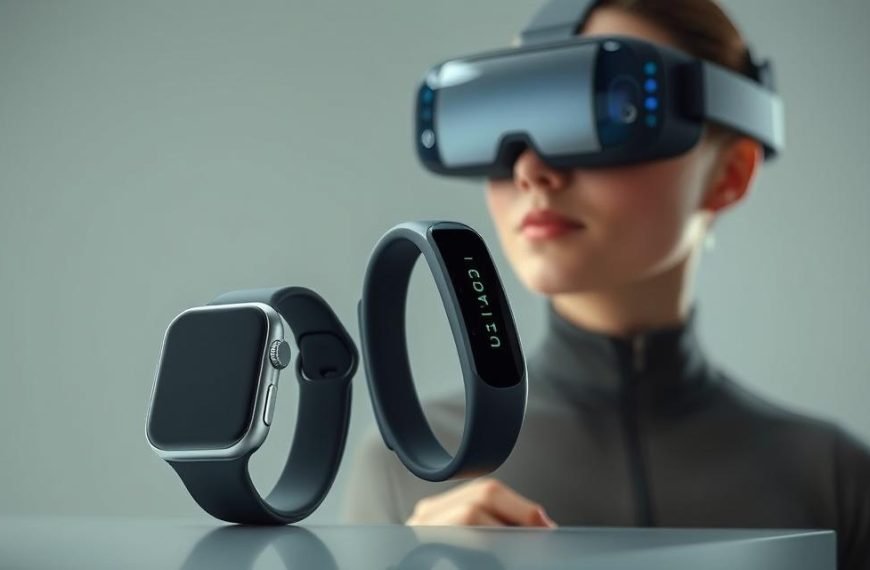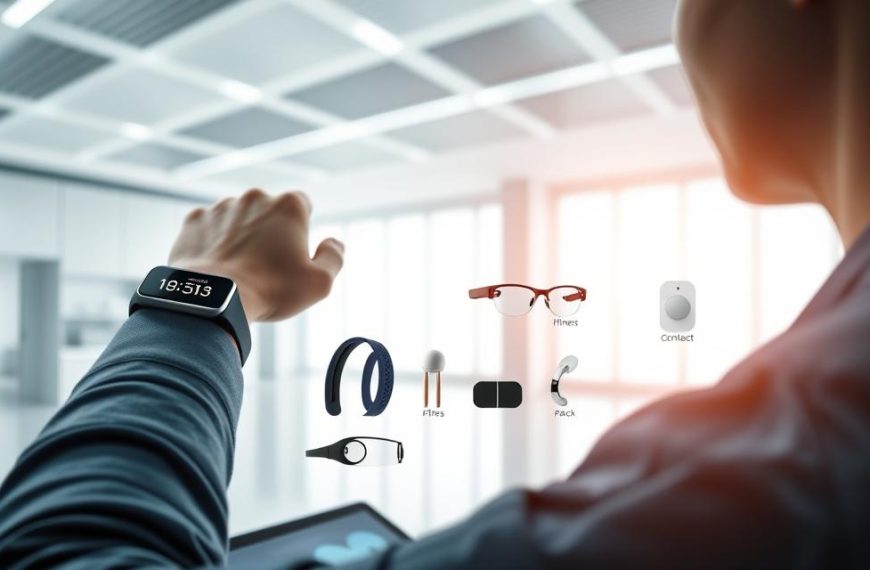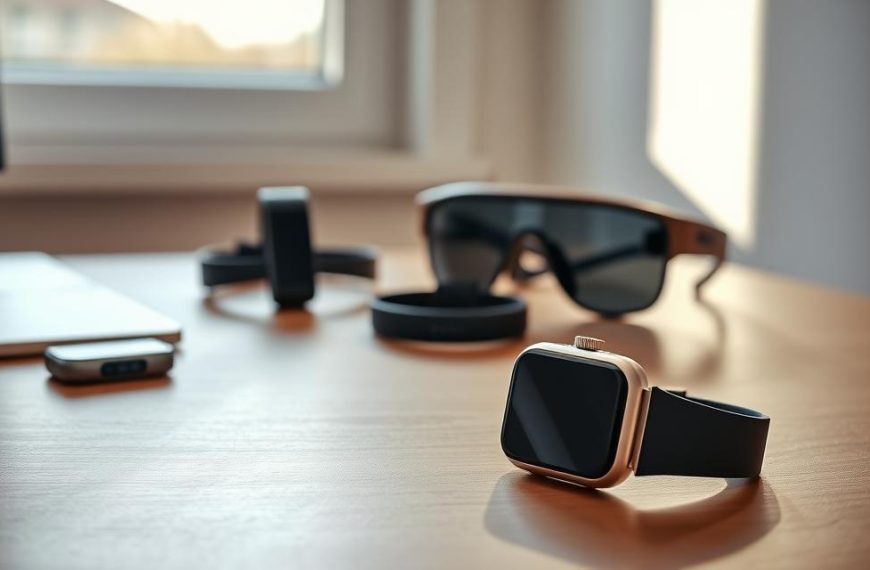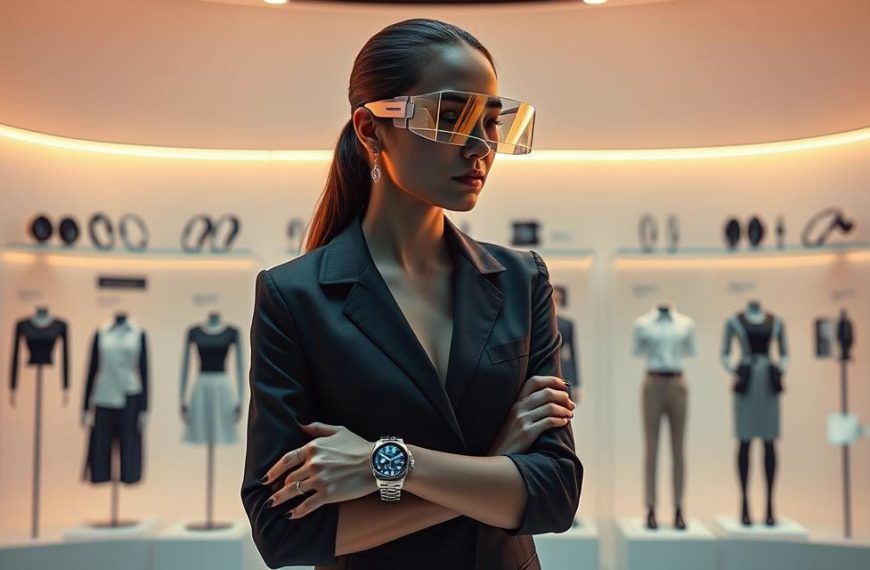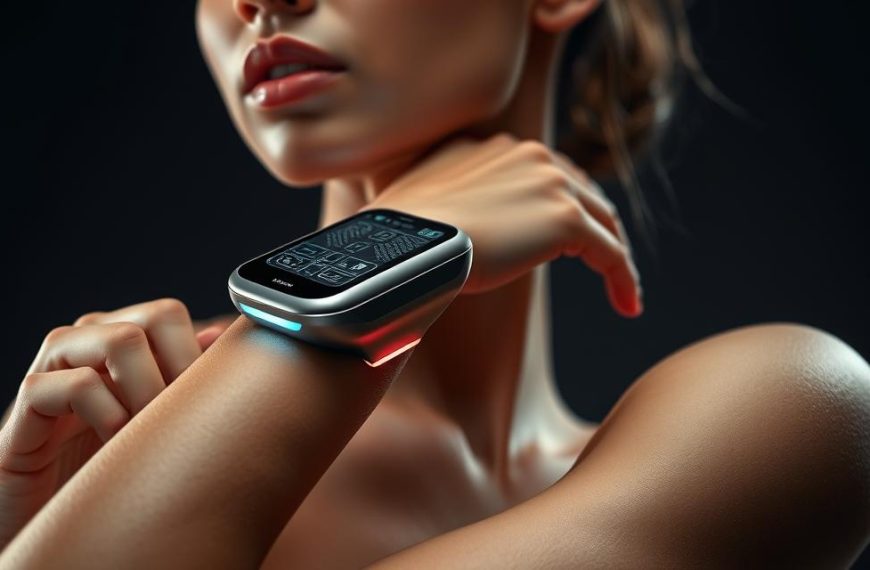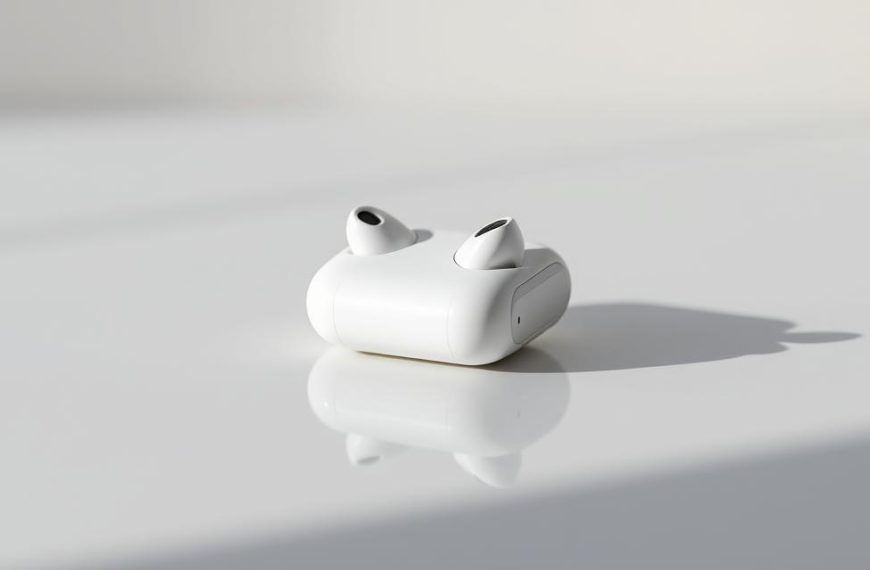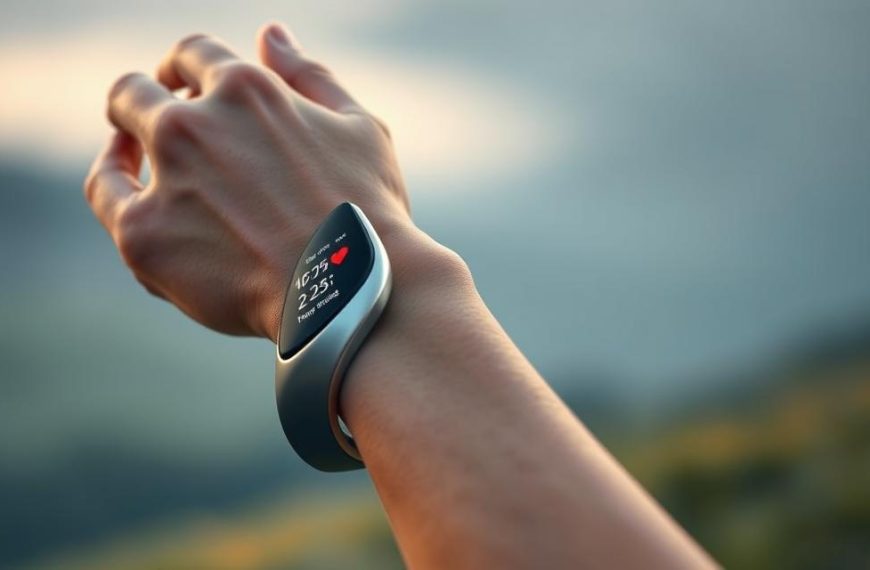Many consumers today rely on devices that monitor health metrics like heart rate, sleep patterns, and activity levels. While these tools offer convenience, questions about their safety continue to grow. Concerns often center around RF radiation exposure, data privacy vulnerabilities, and potential long-term health impacts.
Regulatory bodies like the FCC and FDA play a crucial role in ensuring these devices meet safety standards. However, understanding the risks and taking proactive steps can help users make informed decisions. This article explores key concerns and provides practical strategies to minimize potential hazards.
By staying informed and following expert guidelines, users can enjoy the benefits of these devices while prioritizing their health and safety.
What Is Wearable Technology?
Body-worn devices with advanced computing capabilities have become a staple in modern life. These gadgets are designed to be worn on the body, offering a range of features from fitness tracking to medical monitoring. They seamlessly integrate into daily routines, providing real-time data and personalized insights.
Examples of Wearable Devices
There are various types of these devices available today. Smartwatches like those from Apple, Samsung, and Garmin are popular for their versatility. Fitness trackers such as Fitbit focus on monitoring physical activity and health metrics. Medical-grade tools like glucose monitors and biosensors provide critical data for managing chronic conditions. Other examples include AR/VR headsets for entertainment and safety wearables like GPS panic buttons and smart helmets.
How Wearable Technology Works
These devices rely on Bluetooth or Wi-Fi to sync with smartphones and other gadgets. Low-powered RF transmitters ensure seamless connectivity. Modern versions incorporate AI to analyze health metrics and offer personalized recommendations. For instance, they can suggest custom workout plans based on your activity levels.
The evolution of these tools dates back to the 1960s with the introduction of pacemakers. Today, innovations like Ray-Ban Meta smart glasses showcase how far this technology has come. From fitness to medical and industrial safety, these devices continue to transform how we live and work.
Is Wearable Technology Safe? Understanding the Risks
As wearable devices become more integrated into daily life, questions about their safety are increasingly important. While these gadgets offer convenience and advanced features, concerns about potential risks cannot be ignored. This section explores key issues like RF radiation and regulatory standards to help users make informed decisions.
RF Radiation and Health Concerns
One of the most debated topics is the impact of RF radiation emitted by these devices. According to the NIH, non-ionizing radiation from wearables lacks the energy to damage DNA. This makes it significantly safer compared to ionizing radiation sources.
The FCC limits RF exposure to ensure consumer safety. Wearable devices emit only 1/100th of the international safety thresholds set by the ICNIRP. For example, the radiation levels in these gadgets are much lower than those in cellphones.
“Current scientific evidence does not support a link between non-ionizing radiation from wearables and cancer.” – National Cancer Institute
Despite these reassurances, gaps in long-term research remain. Continuous 24/7 use of wearable devices has not been extensively studied, leaving some questions unanswered.
Regulatory Standards and Compliance
In the U.S., the FCC and FDA play critical roles in ensuring the safety of wearable devices. The FCC tests consumer gadgets to confirm they meet RF exposure limits. Medical-grade devices, like glucose monitors, require FDA approval for safety and efficacy.
Regulatory frameworks vary between regions. For instance, the EU follows stricter guidelines compared to the U.S. These differences highlight the importance of understanding local standards when choosing a device.
| Device Type | RF Radiation Levels | Comparison to Safety Thresholds |
|---|---|---|
| Wearable Devices | Low | 1/100th of ICNIRP limits |
| Cellphones | Moderate | 1/10th of ICNIRP limits |
By understanding these risks and regulations, users can better evaluate the safety of their wearable devices. Staying informed helps ensure a balance between convenience and health.
Privacy and Data Security Concerns
Privacy concerns surrounding data collected by wearable devices are growing among users. These gadgets often track sensitive information, raising questions about how it is stored and shared. Understanding the risks and taking precautions can help protect personal privacy.
Types of Data Collected
Wearable devices gather a wide range of data, including biometric details like heart rate and sleep patterns. GPS location and email addresses are also commonly collected. Apps like Samsung Health and MyFitnessPal may link third-party information, expanding the scope of data access.
Children’s devices, such as Fitbit Ace, minimize data collection to ensure safety. However, adult-focused tools often store extensive user profiles, increasing potential risks.
Potential Privacy Risks
Unauthorized access to personal data is a significant concern. Unencrypted Bluetooth transmissions and app vulnerabilities, like those in MapMyRun forums, expose users to hacking. Social sharing features in apps like Samsung Health can also lead to unintended data exposure.
Regulatory frameworks like GDPR and COPPA provide some protection. However, stronger measures are needed to address gaps. For example, Samsung’s data anonymization practices serve as a best-practice model for other companies.
For more insights on ethical concerns related to wearable data, visit this resource.
Health Impacts of Wearable Technology
The rise of health-focused gadgets has sparked debates about their impact on well-being. These devices offer valuable insights into fitness and medical conditions, but they also come with potential drawbacks. Understanding both the benefits and risks can help users make informed decisions.
Positive Health Benefits
Devices like smartwatches and fitness trackers encourage healthier lifestyles. Studies show a 27% increase in daily activities among users, according to the CDC. Features like step counting and heart rate monitoring motivate people to stay active.
Advanced tools can detect emergencies. For example, Samsung smartwatches alert emergency contacts when a fall is detected. Some devices also monitor irregular heart rhythms, helping users manage chronic conditions effectively.
Medical-grade gadgets provide critical data for managing diabetes and other illnesses. These innovations empower users to take control of their health.
Negative Health Impacts
Despite their benefits, these devices can have downsides. Sleep-tracking inaccuracies often cause unnecessary anxiety. Users may become overly fixated on data, leading to “quantified self” burnout.
Teens are particularly vulnerable. An Internet Matters study found that obsessive tracking can contribute to body dysmorphia. Pediatricians warn against excessive focus on metrics like BMI, which can harm mental health.
Another concern is the 10,000-step myth. The NIH recommends 150 minutes of moderate activity weekly, not a specific step count. Over-reliance on these metrics can lead to unrealistic fitness goals.
| Aspect | Positive Impact | Negative Impact |
|---|---|---|
| Fitness Tracking | Encourages physical activity | May cause obsessive behavior |
| Emergency Alerts | Detects falls and connects to help | False alarms can cause stress |
| Sleep Monitoring | Provides insights into sleep patterns | Inaccuracies lead to anxiety |
Balancing the benefits and risks is key to using these devices effectively. By staying informed, users can maximize their health outcomes while minimizing potential harm.
Safety Tips for Using Wearable Technology
Understanding how to use these gadgets responsibly can enhance their benefits while minimizing risks. By following expert guidelines, users can enjoy advanced features while protecting their safety and privacy. This section provides practical tips for choosing the right device and managing personal data effectively.
Choosing the Right Device
Selecting a device that meets safety standards is crucial. Prioritize gadgets certified by the FCC or FDA, as they adhere to strict guidelines. Avoid grey-market imports, which may lack proper testing and compliance.
Compare popular brands like Fitbit with off-brand trackers. Look for features like low RF radiation levels and emergency alerts. For example, Samsung’s SOS countdown prevents accidental emergency calls, adding an extra layer of security.
Nightly charging reduces RF exposure, while regular software updates patch vulnerabilities. These steps ensure the device remains safe and functional over time.
Managing Data Privacy
Protecting personal data is essential when using these gadgets. Disable GPS and location sharing on fitness apps to minimize tracking. Enable two-factor authentication for added security.
Outline privacy settings step-by-step for devices like Apple Watch or Android wearables. For instance, manually delete stored data every 90 days to prevent unauthorized access. Apps like Samsung Health offer anonymization options, safeguarding user privacy.
For more insights on managing data responsibly, visit this resource.
| Safety Measure | Benefit |
|---|---|
| FCC/FDA Certification | Ensures device meets safety standards |
| Disable GPS Sharing | Protects location data |
| Two-Factor Authentication | Enhances account security |
Wearable Technology for Children: Special Considerations
Children’s use of advanced gadgets requires careful consideration to ensure safety and privacy. Parents must evaluate the features and potential risks of these devices to make informed decisions. From age-appropriate options to setting boundaries, there are several factors to keep in mind.
Age-Appropriate Devices
Not all gadgets are suitable for younger users. Samsung, for instance, requires parental consent for minors under 18. The Fitbit Ace is specifically designed for children aged 8 and above, offering simplified tracking features. Other COPPA-compliant options include the Garmin Vivofit Jr. and TickTalk 4, which prioritize safety and minimal data collection.
Sleep tracking in smartwatches can disrupt circadian rhythms, according to an NIH study. Parents should consider whether such features are necessary for their child’s age and needs. Choosing the right device ensures it aligns with developmental stages and promotes healthy habits.
Monitoring Usage and Setting Boundaries
Managing how children interact with these gadgets is crucial. Tools like Apple Screen Time and Google Family Link allow parents to set screen time limits. Disabling in-app social features can prevent oversharing, especially since 63% of teens share fitness data on social media, as per an Internet Matters survey.
Peer competition in step-count challenges can lead to unhealthy behaviors. Parents should discuss responsible use and emphasize balance over metrics. Samsung’s Minor Account setup process provides a clear example of how to manage data and privacy settings effectively.
By setting clear terms and monitoring use, parents can ensure these gadgets enhance their child’s well-being without compromising safety or privacy.
The Future of Wearable Technology Safety
Advancements in modern gadgets are reshaping how we approach health and safety in everyday life. From AI-driven anomaly detection to graphene-based sensors, the next generation of these tools promises enhanced protection and efficiency. As the market evolves, regulatory frameworks are also adapting to ensure these innovations meet rigorous standards.
Innovations in Safety Features
New features are transforming how these gadgets monitor and protect users. AI-driven systems can now detect anomalies like pre-stroke symptoms, offering early warnings. Graphene-based sensors reduce radiation emissions, making them safer for prolonged use.
Industrial exoskeletons, such as the Sarcos Guardian XO, are reducing workplace injuries by supporting heavy lifting. Smart helmets like WakeCap have cut construction fatalities by 34%. These innovations highlight the potential of modern technology to improve safety across industries.
Regulatory Developments
Regulatory bodies are stepping up to address the challenges posed by these advancements. The EU’s AI Act, effective in 2024, mandates algorithmic transparency for health gadgets. This ensures users understand how their data is processed.
The FDA’s 2025 guidelines focus on continuous health monitoring, setting new benchmarks for accuracy and reliability. Biometric blockchain encryption is also emerging as a solution to enhance data security, protecting sensitive information from breaches.
| Innovation | Impact |
|---|---|
| AI Anomaly Detection | Early health warnings |
| Graphene Sensors | Lower radiation emissions |
| Industrial Exoskeletons | Reduced workplace injuries |
| Biometric Blockchain | Enhanced data security |
As these devices continue to evolve, their integration into daily life will redefine safety standards. By staying informed about these advancements, users can make smarter choices and embrace the benefits of modern technology with confidence.
Conclusion
Balancing convenience with caution is essential when using modern health gadgets. These devices offer significant benefits but require vigilance to minimize potential risks. Ensuring FCC compliance and managing data privacy proactively are critical steps for users.
As technology evolves, ongoing education becomes vital. Staying informed about updates and advancements helps users make smarter choices. Key action steps include vetting certifications, customizing settings, and monitoring usage to enhance safety.
Partnerships like Samsung and Internet Matters are paving the way for child-safe innovations, ensuring these tools remain beneficial for all age groups. By adopting a balanced approach, users can enjoy the advantages of these gadgets while safeguarding their well-being.

